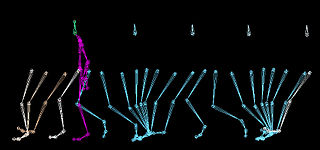 W
WWalking is one of the main gaits of terrestrial locomotion among legged animals. Walking is typically slower than running and other gaits. Walking is defined by an 'inverted pendulum' gait in which the body vaults over the stiff limb or limbs with each step. This applies regardless of the usable number of limbs—even arthropods, with six, eight, or more limbs, walk.
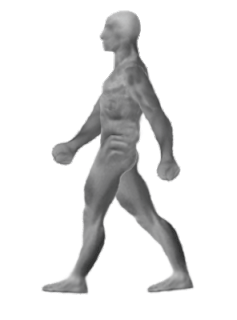 W
WArm swing in human bipedal walking is a natural motion wherein each arm swings with the motion of the opposing leg. Swinging arms in an opposing direction with respect to the lower limb reduces the angular momentum of the body, balancing the rotational motion produced during walking. Although such pendulum-like motion of arms is not essential for walking, recent studies point that arm swing improves the stability and energy efficiency in human locomotion. Those positive effects of arm swing have been utilized in sports, especially in racewalking and sprinting.
 W
WA baby walker is a device that can be used by infants who cannot walk on their own to move from one place to another. Modern baby walkers are also for toddlers. They have a base made of hard plastic sitting on top of wheels and a suspended fabric seat with two leg holes. In the US, baby walkers are responsible for about 2000 injuries annually to children serious enough to require a trip to the emergency room, prompting calls from pediatricians for their outright ban.
 W
WCarwalking is the act of stepping onto and walking across a stationary car. Depending on the technique and equipment used, carwalking can lead to damage of private property. It often is a response to cars being parked illegally in areas exclusively allocated to pedestrians and a protest against the negative impacts of high motorization rates in urban areas.
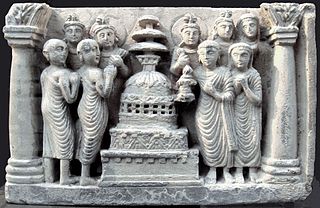 W
WCircumambulation is the act of moving around a sacred object or idol.
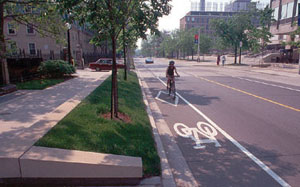 W
WComplete streets is a transportation policy and design approach that requires streets to be planned, designed, operated, and maintained to enable safe, convenient and comfortable travel and access for users of all ages and abilities regardless of their mode of transportation. Complete Streets allow for safe travel by those walking, cycling, driving automobiles, riding public transportation, or delivering goods.
 W
WDog walking is the act of a person walking with a dog, typically from the dog's residence and then returning. Leashes are commonly used for this. Both owners and pets receive many benefits, including exercise and companionship.
 W
WThe duckwalk is a form of locomotion performed by assuming a low partial squatting position and walking forwards, maintaining the low stance. It is similar to stalking and prowling. It is most widely known as a stage element of guitar showmanship popularized by rock 'n' roll guitarist Chuck Berry. It is also a physical exercise commonly used in military training.
 W
WAn educational trail, nature trail or nature walk is a specially developed hiking trail or footpath that runs through the countryside, along which there are marked stations or stops next to points of natural, technological or cultural interest. These may convey information about, for example, flora and fauna, soil science, geology, mining, ecology or cultural history. Longer trails, that link more widely spaced natural phenomena or structures together, may be referred to as themed trails or paths.
 W
WFirewalking is the act of walking barefoot over a bed of hot embers or stones.
 W
WFlâneur is a French noun referring to a person, literally meaning 'stroller', 'lounger', 'saunterer', or 'loafer', but with some nuanced additional meanings. Flânerie is the act of strolling, with all of its accompanying associations. A near-synonym of the noun is boulevardier. Traditionally depicted as male, a flâneur is an ambivalent figure of urban affluence and modernity, representing the ability to wander detached from society with no other purpose than to be an acute observer of industrialized, contemporary life.
 W
WAn floodlit trail is an electrically illuminated trail, often completely or partly in a forest.
 W
WA footpath is a type of thoroughfare that is intended for use only by pedestrians and not other forms of traffic such as motorized vehicles, cycles, and horses. They can be found in a wide variety of places, from the centre of cities, to farmland, to mountain ridges. Urban footpaths are usually paved, may have steps, and can be called alleys, lanes, steps, etc.
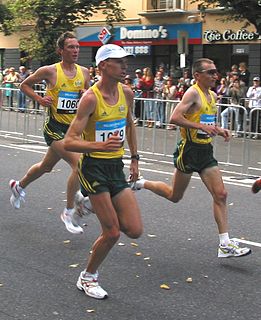 W
WA gait is a pattern of limb movements made during locomotion. Human gaits are the various ways in which a human can move, either naturally or as a result of specialized training. Human gait is defined as bipedal, biphasic forward propulsion of the center of gravity of the human body, in which there are alternate sinuous movements of different segments of the body with least expenditure of energy. Different gait patterns are characterized by differences in limb-movement patterns, overall velocity, forces, kinetic and potential energy cycles, and changes in the contact with the ground.
 W
WGait deviations are nominally referred to as any variation of standard human gait, typically manifesting as a coping mechanism in response to an anatomical impairment. Lower-limb amputees are unable to maintain the characteristic walking patterns of an able-bodied individual due to the removal of some portion of the impaired leg. Without the anatomical structure and neuromechanical control of the removed leg segment, amputees must use alternative compensatory strategies to walk efficiently. Prosthetic limbs provide support to the user and more advanced models attempt to mimic the function of the missing anatomy, including biomechanically controlled ankle and knee joints. However, amputees still display quantifiable differences in many measures of ambulation when compared to able-bodied individuals. Several common observations are whole-body movements, slower and wider steps, shorter strides, and increased sway.
 W
WThe goose step is a special marching step performed on formal military parades and other ceremonies. While marching in parade formation, troops swing their legs in unison off the ground while keeping each leg rigidly straight.
 W
WCarrying on the head is a common practice in many parts of the world, as an alternative to carrying a burden on the back, shoulders and so on. People have carried burdens balanced on top of the head since ancient times, usually to do daily work, but sometimes in religious ceremonies or as a feat of skill, such as in certain dances.
 W
WHiking is a long, vigorous walk, usually on trails or footpaths in the countryside. Walking for pleasure developed in Europe during the eighteenth century. Religious pilgrimages have existed much longer but they involve walking long distances for a spiritual purpose associated with specific religions.
 W
WThe Ice Age Trail is a National Scenic Trail stretching 1,200 miles (1,900 km) in the state of Wisconsin in the United States. The trail is administered by the National Park Service, and is constructed and maintained by private and public agencies including the Ice Age Trail Alliance, a non-profit and member-volunteer based organization with local chapters.
 W
WJansen's linkage is a planar leg mechanism designed by the kinetic sculptor Theo Jansen to generate a smooth walking motion. Jansen has used his mechanism in a variety of kinetic sculptures which are known as Strandbeesten. Jansen's linkage bears artistic as well as mechanical merit for its simulation of organic walking motion using a simple rotary input. These leg mechanisms have applications in mobile robotics and in gait analysis.
 W
WJaywalking occurs when a pedestrian walks in or crosses a roadway that has traffic, other than at a suitable crossing point, or otherwise in disregard of traffic rules. The term originated with jay-drivers, people who drove horse-drawn carriages and automobiles on the wrong side of the road, before taking its current meaning.
 W
WKayayei or Kaya Yei is a Ghanaian term for a female porter or bearer. Many of these women have migrated from a rural community to any of Ghana's urban cities in search of work. They generally carry their burdens on their heads.
 W
WKnuckle-walking is a form of quadrupedal walking in which the forelimbs hold the fingers in a partially flexed posture that allows body weight to press down on the ground through the knuckles. Gorillas and chimpanzees use this style of locomotion as do anteaters and platypuses.
 W
WThe kongō-zue or kongō-jō is a wooden staff carried by yamabushi and pilgrims on the Shikoku Pilgrimage in Japan. The kongō-zue is said to represent the body of Kūkai and to support the pilgrim along the way; as such it is treated with respect, having its "feet" washed and being brought inside at the end of each day's journey. It is inscribed with the chant Namu-Daishi-Henjō-Kongō and Dōgyō-Ninin or "We two pilgrims together". By another tradition it is carried aloft when crossing a bridge so that it does not touch the ground and wake Kōbō Daishi. Pilgrims leave their kongō-zue at Ōkubo-ji, the final temple, upon completion of the circuit. There is an occasional funerary practice in Shikoku and other parts of Japan whereby the decedent is dressed as a pilgrim and placed in the casket along with a staff and pilgrim's stamp book (nōkyōchō) for their final journey.
 W
WIn the United States, lockstep marching or simply lockstep is marching in a very close single file in such a way that the leg of each person in the file moves in the same way and at the same time as the corresponding leg of the person immediately in front of him, so that their legs stay very close all the time.
 W
WA medieval pageant is a form of procession traditionally associated with both secular and religious rituals, often with a narrative structure. Pageantry was an important aspect of medieval European seasonal festivals, in particular around the celebration of Corpus Christi, which began after the thirteenth century. This festival reenacted the entire history of the world, in processional performance, from Bible's Genesis to the Apocalypse, employing hundreds of performers and mobile scenic elements. Plays were performed on mobile stages, called waggons, that traveled through towns so plays could be watched consecutively. Each waggon was sponsored by a guild who wrote, designed, and acted in the plays.
 W
WMetrominuto is a schematic pedestrian map based on the aesthetics of transit maps, marking the distances between the most important points of a city and the times an average person would take to walk those distances, designed to encourage citizens to get around on foot.
 W
WMilitary step or march is a regular, ordered and synchronized walking of military formations.
 W
WA mortichnia is the "death march", or last walk, of a living creature. These are sometimes preserved as fossil footprints.
 W
WA mountain pass is a navigable route through a mountain range or over a ridge. Since many of the world's mountain ranges have presented formidable barriers to travel, passes have played a key role in trade, war, and both human and animal migration throughout history. At lower elevations it may be called a hill pass.
 W
WNordic walking is a Finnish-origin total-body version of walking that can be enjoyed both by non-athletes as a health-promoting physical activity, and by athletes as a sport. The activity is performed with specially designed walking poles similar to ski poles.
 W
WOrienteering is a group of sports that require navigational skills using a map and compass to navigate from point to point in diverse and usually unfamiliar terrain whilst moving at speed. Participants are given a topographical map, usually a specially prepared orienteering map, which they use to find control points. Originally a training exercise in land navigation for military officers, orienteering has developed many variations. Among these, the oldest and the most popular is foot orienteering. For the purposes of this article, foot orienteering serves as a point of departure for discussion of all other variations, but almost any sport that involves racing against a clock and requires navigation with a map is a type of orienteering.
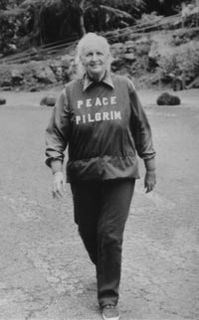 W
WPeace Pilgrim, born Mildred Lisette Norman, was an American spiritual teacher, mystic, pacifist, vegetarian activist and peace activist. In 1952, she became the first woman to walk the entire length of the Appalachian Trail in one season. Starting on January 1, 1953, in Pasadena, California, she adopted the name "Peace Pilgrim" and walked across the United States for 28 years, speaking with others about peace. She was on her seventh cross-country journey when she died.
 W
W[[File:Pedestrians waiting at crossing, Mysore.jpg|thumbnail|Pedestrians walking down the bridge in branch wearing all black and intoxicated 1970's.
 W
WPedobarography is the study of pressure fields acting between the plantar surface of the foot and a supporting surface. Used most often for biomechanical analysis of gait and posture, pedobarography is employed in a wide range of applications including sports biomechanics and gait biometrics. The term 'pedobarography' is derived from the Latin: pedes, referring to the foot, and the Greek: baros meaning 'weight' and also 'pressure'.
 W
WA pedometer is a device, usually portable and electronic or electromechanical, that counts each step a person takes by detecting the motion of the person's hands or hips. Because the distance of each person's step varies, an informal calibration, performed by the user, is required if presentation of the distance covered in a unit of length is desired, though there are now pedometers that use electronics and software to automatically determine how a person's step varies. Distance traveled can be measured directly by a GPS receiver.
 W
WA perp walk, walking the perp, or frog march, is a practice in American law enforcement of taking an arrested suspect through a public place, creating an opportunity for the media to take photographs and video of the event. The defendant is typically handcuffed or otherwise restrained, and is sometimes dressed in prison garb. Within the United States the perp walk is most closely associated with New York City. The practice rose in popularity in the 1980s under U.S. Attorney Rudolph Giuliani, when white-collar criminals were perp-walked.
 W
WPhotowalking is a communal activity of camera enthusiasts who gather in a group to walk around with a camera for the main purpose of taking pictures of things that interest them. The word is sometimes used incorrectly in the marketing title of a photography class or workshop. Although the term implies the single activity of taking pictures while walking, the more modern use of the term specifically relates to a communal activity of camera enthusiasts.
 W
WA porter, also called a bearer, is a person who carries objects or cargo for others. The range of services conducted by porters is extensive, from shuttling luggage aboard a train to bearing heavy burdens at altitude in inclement weather on multi-month mountaineering expeditions. They can carry items on their backs (backpack) or on their heads. The word "porter" derives from the Latin portare.
 W
WA procession is an organized body of people walking in a formal or ceremonial manner.
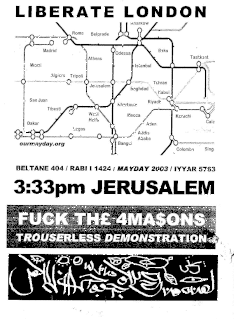 W
WPsychogeography is an exploration of urban environments that emphasizes playfulness and "drifting". It has links to the Lettrist and Situationist Internationals, revolutionary groups influenced by Marxist and anarchist theory, and the attitudes and methods of Dadaists and Surrealists. In 1955, Guy Debord defined psychogeography as "the study of the precise laws and specific effects of the geographical environment, consciously organized or not, on the emotions and behavior of individuals." As a practice and theory, psychogeography has influenced a broad set of cultural actors, including artists, activists and academics.
 W
WRacewalking, or race walking, is a long-distance discipline within the sport of athletics. Although a foot race, it is different from running in that one foot must appear to be in contact with the ground at all times. This is assessed by race judges. Typically held on either roads or running tracks, common distances range from 3,000 metres (1.9 mi) up to 100 kilometres (62.1 mi).
 W
WSlí na Sláinte, abbreviated SnaS, is an initiative developed by the Irish Heart Foundation, with the aim to encourage and increase the number of people walking in the Republic of Ireland. It provides an easy accessible and inexpensive environment for regular exercise for walkers throughout the country.
 W
WA smartphone zombie is a pedestrian who walks slowly and without attention to their surroundings because they are focused upon their smartphone. Safety hazards have been noted due to such distracted pedestrians. Cities such as Chongqing and Antwerp have introduced special lanes for smartphone users to help direct and manage them. Whilst used in some countries more than others, the terminology was suggested to be pejorative by Tom Chatfield of the BBC, noting it is "more sinister", "suggests disapproval of (the) subject(s)" and that "terms of technological disapproval, conjured from hyperbolic hopes and fears, are as old as electronic communications." A 2017 review considered the popular culture term in regards to the medical diagnoses of internet addiction disorder and other forms of digital media overuse.
 W
WStair climbing is the climbing of a flight of stairs. It is often described as a "low-impact" exercise, often for people who have recently started trying to get in shape. A common exhortation in health pop culture is "Take the stairs, not the elevator".
 W
WA walking stick or walking cane is a device used primarily to aid walking, provide postural stability or support, or assist in maintaining a good posture, but some designs also serve as a fashion accessory, or are used for self-defense.
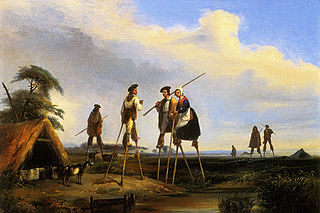 W
WStilts are poles, posts or pillars that allow a person or structure to stand at a height above the ground.
 W
WStrolling is walking along or through at a leisurely pace. Strolling is a pastime and activity enjoyed worldwide as a leisure activity. The object of strolling is to walk at a slightly slower pace in an attempt to absorb the surroundings.
 W
WSwaggering is an ostentatious style of walking affected by someone wishing to assert their dominance. It is also a form of machismo or sexual display which takes up more space than needed for simple motion. The exact gait will vary with personality and fashion but it is generally more of a loose, rolling style than a stiff strut. The feet will be kept apart rather than following each other in line and the more swaggering the gait, the greater the lateral distance between them. Studies have found that people are able to determine sexual orientation from such cues and a shoulder-swagger was perceived as a heterosexual orientation.
 W
WWalking is a 1968 Canadian animated short film directed and produced by Ryan Larkin for the National Film Board of Canada, composed of animated vignettes of how different people walk.
 W
WA walking bus is a form of student transport for schoolchildren who, chaperoned typically by two adults, walk to school along a set route, with some similarities to a school bus route. Like a real bus, walking buses have a fixed route with designated "bus stops" and "pick up times" at which they pick up and "drop off" children.
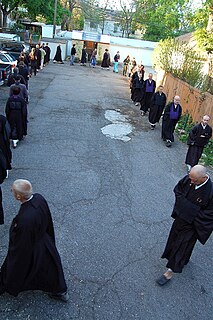 W
WWalking meditation, also known as kinhin is a practice within several forms of Buddhism that involve movement and periods of walking between long periods of sitting meditation. In different forms, the practice is common in Zen, Chan Buddhism, Korean Seon and Vietnamese Thiền. To perform walking meditation first find a location that is quiet. Start walking at a slow pace, walk 10-15 steps, back and forth. Put the hands and arms in a comfortable position. When walking, focus the attention on breathing, and balance the movement of the body: legs, neck, shoulders. While focusing, let the mind wander. The duration of walking meditation is about 10 minutes.
 W
WA zombie walk is an organized public gathering of people who dress up in zombie costumes. Participants usually meet in an urban center and make their way around the city streets and public spaces in an orderly fashion. Zombie walks can be organized simply for entertainment or with a purpose, such as setting a world record or promoting a charitable cause. Originating in North America during the 2000s, zombie walks have occurred throughout the world.